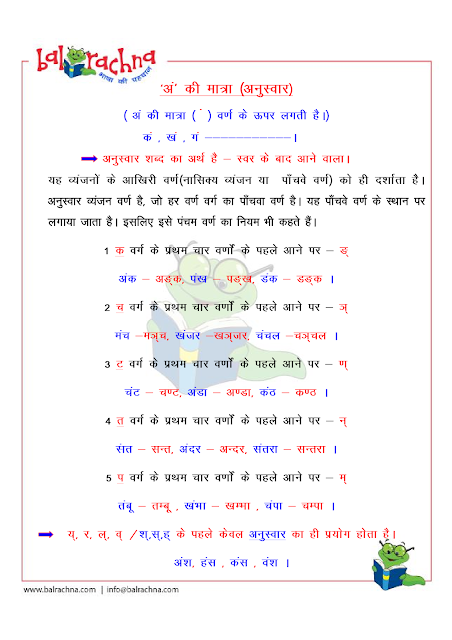I have been requested to describe how to differentiate the
pronunciation of words with the matra of इ/ई and उ/ऊ.
As we all know that Hindi is a
phonetic language. It is
important to be able to distinguish between short and long vowels for
correct pronunciation because these vowels, in combination with consonants are
used to form words.
·
The
sound of इ - i/ [ɪ] is short ‘i’ in ill, it, inn.
( Short vowel)
दिन - d̪ɪnə /din(a)
दिल - d̪ɪlə
/dil(a)
तकिया - t̪əkɪja: / takiyaa
· ई - ee/ [i:] as sound
of long ‘ee’ in feet, esteem
(Long vowel)
तीर - t̪i:ɾə /teer(a)
मछली - mətʃʰəli: /machalee
सिपाही - sɪpa:ɦi: /sipaahee
· The matra of उ
/ ऊ is placed at the bottom of the alphabet.
e.g. – उ - कु, चु, टु ... / ऊ - कू, चू,
टू ...
· The sound of उ - u /[ʊ] as sound of short "u" in put, push, pull
( Short vowel)
पुल - pʊlə
/pul(a)
सुई - sʊi:
/suee
कछुआ - kətʃʰʊa:/ kachuaa
· The sound of ऊ - oo/
[u:] as sound of long "u/oo” in
soon,
spoon, fool (Long vowel)
फूल - pʰʊlə /phool(a)
तूफ़ान - t̪u:fa:nə
/toofaan(a)
खजूर - kʰədʒʊ:ɾə/ khajoor(a)
खुशबू - kʰʊʃəbu: /khushaboo
·
While with the alphabet र matra of उ
/ ऊ is marked like रु/रू.
रुमाल - (र् + उ =
रु) - ɾʊma:lə
/rumaal(a)
( Short vowel)
रूप - (र् + ऊ =
रू) - ɾu:pə /roop(a)
(Long vowel)
Last but not the least, the
use of की/कि.
Ø
की is the Possessive Case(कारक), which shows the
relation of Noun/Pronoun to some other word in a sentence.
Ram’s book. राम की किताब
Ø
कि is conjunction(समुच्चयबोधक) which connects two phrases or
clauses.
Ram said that he lost his book.
राम ने कहा कि उसकी
किताब खो गई।
I hope this post has been helpful in clearing the doubts
regarding the pronunciation of words with the matra of इ/ई and उ/ऊ.
If this blog is helpful
in teaching your kids then please hit the follow button and leave a comment. I
would love to have feedback.
Happy teaching !!!!!!


